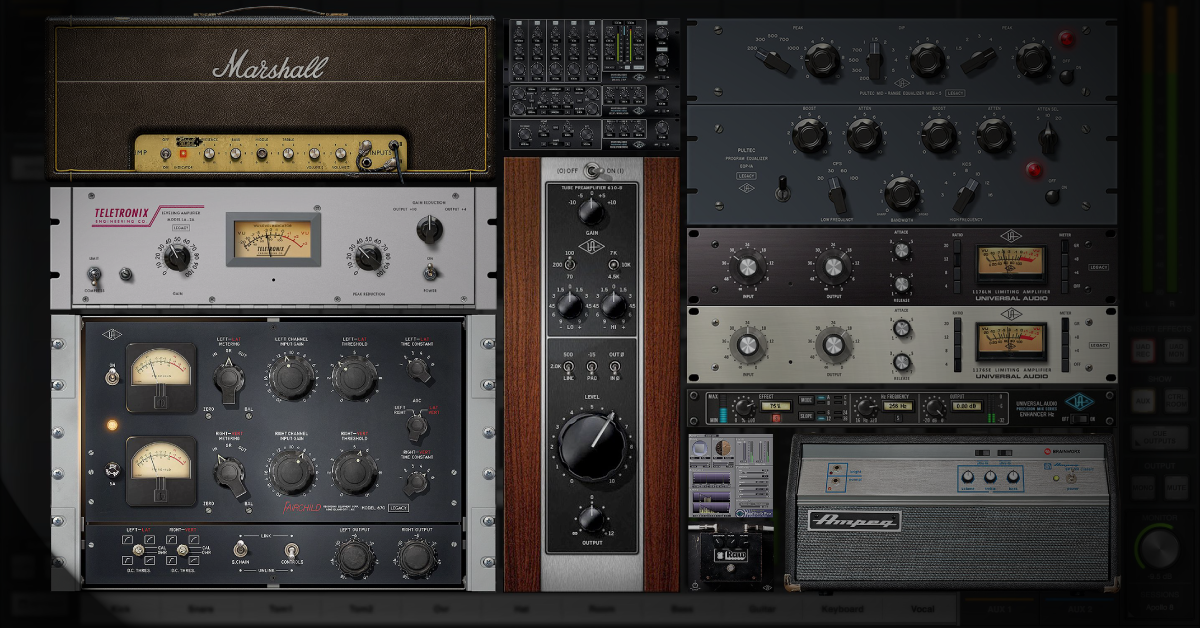
Head amps most commonly have an amplification range of around 70dB, and are designed to have a very low noise floor. As microphones generally output a much lower signal level - typically around 0.3mV (-68dBu) for the average sound level of conversational speech at 1 meter from the microphone (60dBSPL), these signals are amplified to a nominal level before entering further electronic circuits using a microphone preamplifier, or ‘head amp’, abbreviated HA.
#Universal audio plugins not on both computers professional#
The professional audio market adopted a nominal analogue signal level of 0.775Vrms as 0dBu reference for line level audio signals, optimally supporting electronic circuit designs with 9V to 15V balanced power supplies used in many audio products. The lowest frequency an acoustic sound source can generate closes in to zero Hertz (‘subsonic’), where the maximum wave pressure frequency in air without distortion is said to be above 1GHz. The maximum undistorted sound pressure level is said to be above 160dBSPL before vacuum pockets start to form in the air. resting bodies at absolute zero temperature. The lowest sound pressure level in dB generated by acoustic sound sources closes in to minus infinity - eg. Finally, almost all human activities (including singing) - and man-made machinery (including car engines and bomb detonations) generate sound. The output of an audio system is also an acoustic sound source.

In nature, sound often is generated by wind shearing past objects (eg.

Sound sources can be omni-directional - radiating to all directions, or directional, concentrating energy in one or more directions. When an issue is presented to apply to digital audio systems, it also applies for networked audio systems.Īn acoustic sound source generates vibrations and radiates them to the air. When an issue is presented to apply to networked audio systems, the issue does not apply to digital audio systems. In this white paper, the terms ‘networked audio system’ and ‘digital audio system’ are applied loosely, as many of the concepts presented concern both. At this moment, digital point-to-point audio protocols such as AES10 (MADI) are being replaced by network protocols such as Dante, EtherSound. Since the early 1980’s many parts of audio systems gradually became digital, leaving only head amps, A/D and D/A conversion and power amplification remaining as electronic circuits, and microphones and loudspeakers as electroacoustic components.

But since the invention of the carbon microphone in 1887-1888 individually by Edison and Berliner, most audio systems use electrical circuits. two empty cans with a tensioned string in-between, or a mechanical gramophone player.


 0 kommentar(er)
0 kommentar(er)
